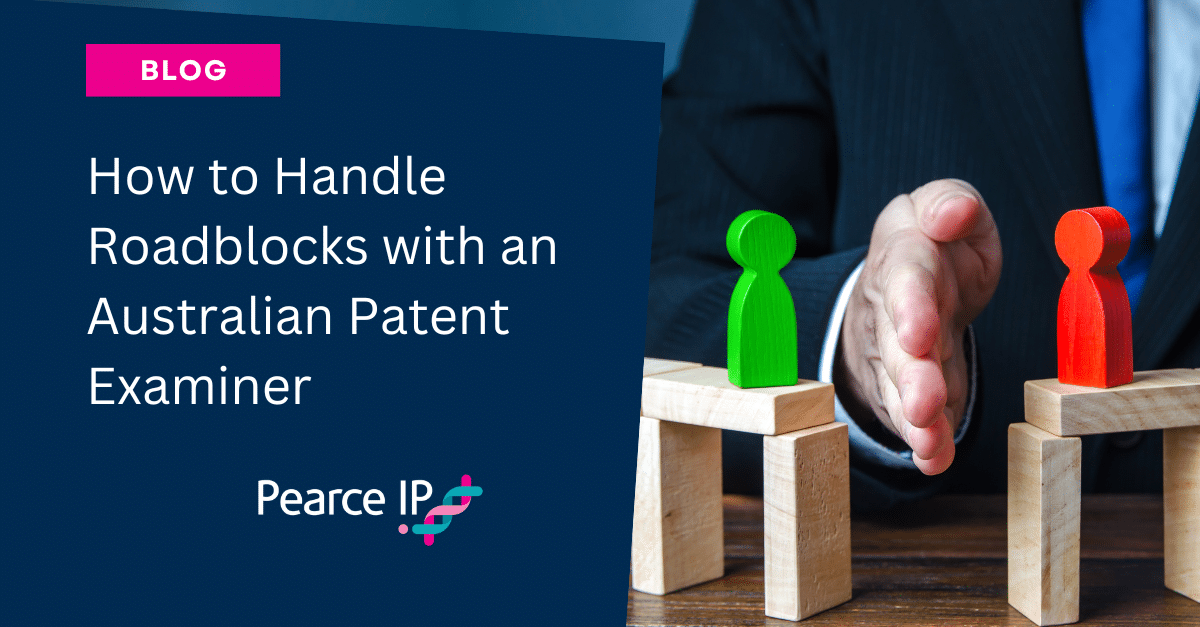Date of decision: 25 and 28 June 2024, respectively
Body: APO
Adjudicator: Apple Inc.- Shreyas Kumar – Amazentis SA- Dr Scott D. Makin
Date of decision:
25 and 28 June 2024, respectively
Amazentis SA- Dr Scott D. Makin
We shine the spotlight on two recently published Australian Patent Office hearing decisions which starkly illustrate the pros and cons of escalating examination to a hearing. These pros and cons must be carefully weighed before requesting a hearing where challenges to patentability raised by the Examiner appear insurmountable. Applicants must “pick their battles”, particularly if an adverse hearing decision might negatively impact their broader patenting strategy.
Typically, an Australian application may undergo several rounds of prosecution, meaning that multiple examination reports may be issued until a response is filed which is persuasive and addresses all the examiner’s objections. However, it can sometimes be the case that an applicant reaches an impasse with an examiner, where objections are raised which may be unjustified or unduly maintained in successive reports. So, what can Australian patent applicants do if an examiner has misunderstood an inventive concept or argument, and is making an unreasonable objection? The Act provides applicants with a right to be heard before an application is formally refused. Requesting a hearing is a formal process, which escalates examination within the Patent Office to a hearing before an independent senior examiner (i.e. a Delegate of the Commissioner). There are key pros and cons to this approach as summarised below:
Pros:
- The 12 month acceptance period is effectively suspended. If examination recommences after a hearing, a new acceptance deadline will be set.
- A positive decision can enable an impasse to be overcome.
Cons:
- Once the hearing is complete, a written decision is rendered which can act as a precedent. An adverse decision can therefore have broad negative impact.
- There are additional costs – both in official and professional fees where legal counsel is assisting.
Two recently published Australian Patent Office hearing decisions provide examples where applicants have requested to be heard. In the first example, the applicant was arguably worse off as a result of the hearing, whereas the second example shows that escalation to a hearing can be beneficial.
Apple Inc. [2024] APO 25 (25 June 2024)
Apple Inc. requested to be heard in relation to an inventive step objection raised against AU 2019281965 (‘965 Application) in a fourth examination report. The invention of the ‘965 Application provides more efficient and faster methods for biometric enrolment and authentication in electronic devices. A key feature of the invention is a method which encompasses ‘determining or correcting the orientation of the device’ with respect to biometric authentication by providing prompts for the orientation of a device to ensure the biometric feature is properly captured and later used for authentication. This feature seeks to address the lack of correct guidance to the user enrolling a biometric feature or for biometric authentication, thus improving efficiency.[1]
In considering the prosecution history of the ‘965 Application, the statutory basis for inventive step, and tests for obviousness outlined by the Australian High Court[2], the Delegate conducted a meticulous analysis of claim 1 in comparison to key prior art documents. The Delegate found that claim 1 lacked both novelty and inventive step in view of one citation, specifically noting that the feature of prompting a user to correct or alter orientation of the device where enrolment criteria for capturing biometric data are not satisfied was prior disclosed.
While Apple Inc.’s decision to request a hearing resulted in an adverse outcome, the Delegate provided Apple Inc. with 4 months from the date of the decision (i.e. until 25 October 2024) to achieve acceptance. Apple Inc. can therefore continue prosecution and may possibly achieve acceptance of the ‘965 Application with further amendments. Alternatively, the hearing decision may be appealed to the Australian Federal Court by 16 July 2024 (under provisions of the Act which permit appeal to the Federal Court within 21 days of a decision of the Commissioner).
Amazentis SA [2024] APO 27 (28 June 2024)
Amazentis SA filed AU 2021201143 (‘143 Application) to continue prosecution of parent application AU 2016314988 which lapsed as acceptance of the parent was not achieved in the allotted timeframe. The invention described in the applications related to nutritional and medical formulations comprising compositions of urolithin compounds, in particular urolithin A, and proteins. The combination of urolithin A and protein was stated to be superior in treating low muscle mass, enhancing muscle growth and performance, and maintaining muscle performance.
The parent application had 3 adverse reports issued against it, whereas 2 adverse reports were issued against the ‘143 Application. In its submissions during examination of the ‘143 Application, Amazentis SA argued that the examiner, in maintaining an obviousness objection, improperly relied on citations which did not reflect the common general knowledge (CGK) as at the priority date of the application. Amazentis SA also contended that, even if these documents did reflect the CGK, the invention still possessed an inventive step as the prior art did not disclose the combination of urolithin A and specific protein ranges. The examiner, nevertheless, maintained the objection, referencing additional prior art documents to support the obviousness assertion.
The obviousness objection posed a hurdle. Further, through conversations with the examiner, Amazentis SA became aware that the examiner intended to issue a third report, maintaining an inventive step objection. It was at this point that Amazentis SA requested to be heard.
In considering the statutory basis for inventive step, and tests for obviousness outlined by the Australian High Court2, the Delegate determined that the core of the Amazentis SA’s invention involved the combination of urolithin A and specific protein ranges to enhance muscle function. Documents considered by the examiner to constitute CGK discussed recommended protein intake levels but emphasised the necessity of exercise to improve muscle function, suggesting they did not directly address the same problem as presented in the ‘143 Application (i.e. that the compositions of the invention are effective in enhancement of muscle function in the absence of exercise, or with less exercise being necessary). Amazentis SA argued that these ‘CGK documents’ did not motivate combining protein with urolithin A as they primarily recommend exercise alongside protein intake.
The Delegate also determined that the additional prior art cited by the examiner disclosed the potential of urolithin A to improve muscle function but did not motivate its combination with specific protein levels. The Delegate ultimately sided with Amazentis SA, noting that combinations of the cited prior art with the documents alleged to constitute CGK would amount to an improper use of hindsight. The Delegate therefore overturned the examiner’s decision allowing the ‘143 Application.
Conclusions
There may be justification in escalating examination to a hearing. However, all pros and cons must be considered. Applicants must choose their battles wisely, particularly if an adverse hearing decision might negatively impact a broader patenting strategy as well as the business’ commercial strategy.
[1] [2024] APO 25 at [49]
[2] See Wellcome Foundation Ltd v VR Laboratories (Aust) Pty Ltd [1981] HCA 12; 148 CLR 262 and Aktiebolaget Hässle v Alphapharm Pty Ltd [2002] HCA 59 in particular
About Pearce IP
Pearce IP is a specialist firm offering intellectual property specialist lawyers and attorneys with a focus on the life sciences industries. Pearce IP and its leaders are ranked in every notable legal directory for legal, patent and trade mark excellence, including: Chambers & Partners, Legal 500, IAM Patent 1000, IAM Strategy 300, MIP IP Stars, Doyles Guide, WTR 1000, Best Lawyers, WIPR Leaders, 5 Star IP Lawyers, among others.
In 2025, Pearce IP was recognised by Australasian Lawyer and New Zealand Lawyer’s 5 Star Employer of Choice, and is the “Standout Winner” for inclusion and culture for firms with less than 100 employees. Pearce IP was awarded “IP Team of the Year” by Lawyers Weekly at the 2021 Australian Law Awards. Pearce IP is recognised by Managing IP as the only leading ANZ IP firm with a female founder, and is certified by WEConnect International as women owned.

Naomi Pearce
CEO, Executive Lawyer (AU, NZ), Patent Attorney (AU, NZ) & Trade Mark Attorney (AU)
Naomi is the founder of Pearce IP, and is one of Australia’s leading IP practitioners. Naomi is a market leading, strategic, commercially astute, patent lawyer, patent attorney and trade mark attorney, with over 25 years’ experience, and a background in molecular biology/biochemistry. Ranked in virtually every notable legal directory, highly regarded by peers and clients, with a background in molecular biology, Naomi is renown for her successful and elegant IP/legal strategies.
Among other awards, Naomi is ranked in Chambers, IAM Patent 1000, IAM Strategy 300, is a MIP “Patent Star”, and is recognised as a WIPR Leader for patents and trade marks. Naomi is the 2023 Lawyers Weekly “IP Partner of the Year”, the 2022 Lexology client choice award recipient for Life Sciences, the 2022 Asia Pacific Women in Business Law “Patent Lawyer of the Year” and the 2021 Lawyers Weekly Women in Law SME “Partner of the Year”. Naomi is the founder of Pearce IP, which commenced in 2017 and won 2021 “IP Team of the Year” at the Australian Law Awards.

Helen Macpherson
Executive, Lawyer (Head of Litigation –Australia)
Helen is a highly regarded intellectual property specialist and industry leader with more than 25 years’ experience advising on patents, plant breeder’s rights, trade marks, copyright and confidential information. She is known for her expertise in complex, high-value patent matters and leverages her technical background in biochemistry and molecular biology to work across a wide range of technologies, including inorganic, organic, physical and process chemistry, biochemistry, biotechnology (including genetics, molecular biology and virology), and physics. Helen is an active member of the Intellectual Property Committee of the Law Council of Australia and the Intellectual Property Society of Australia and New Zealand.

